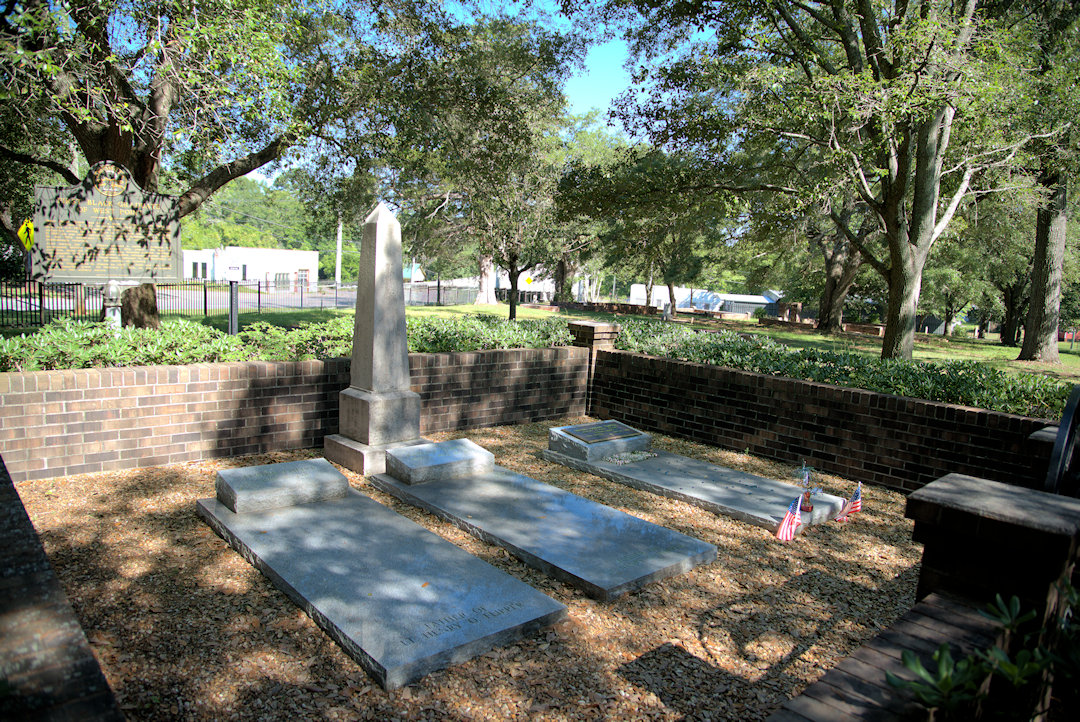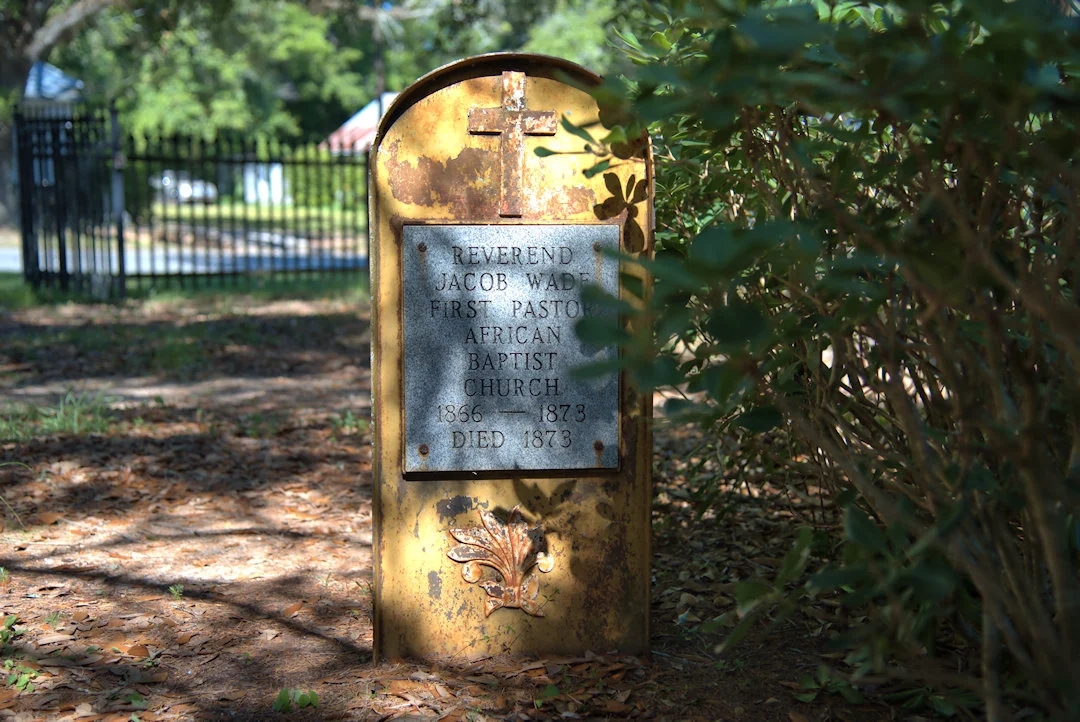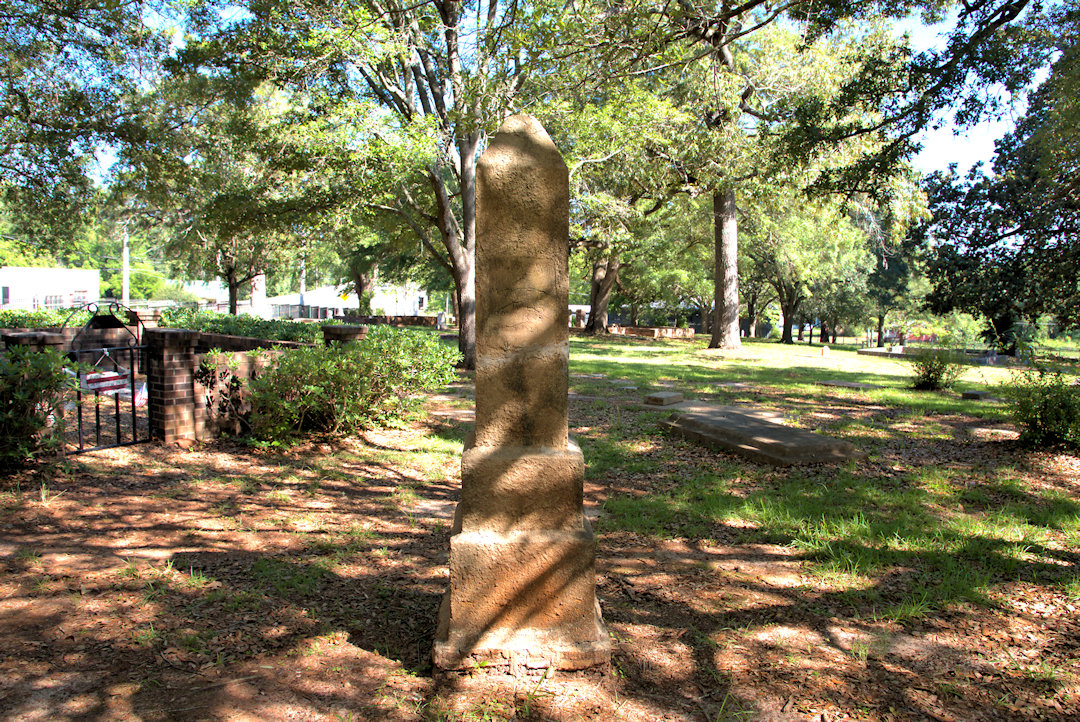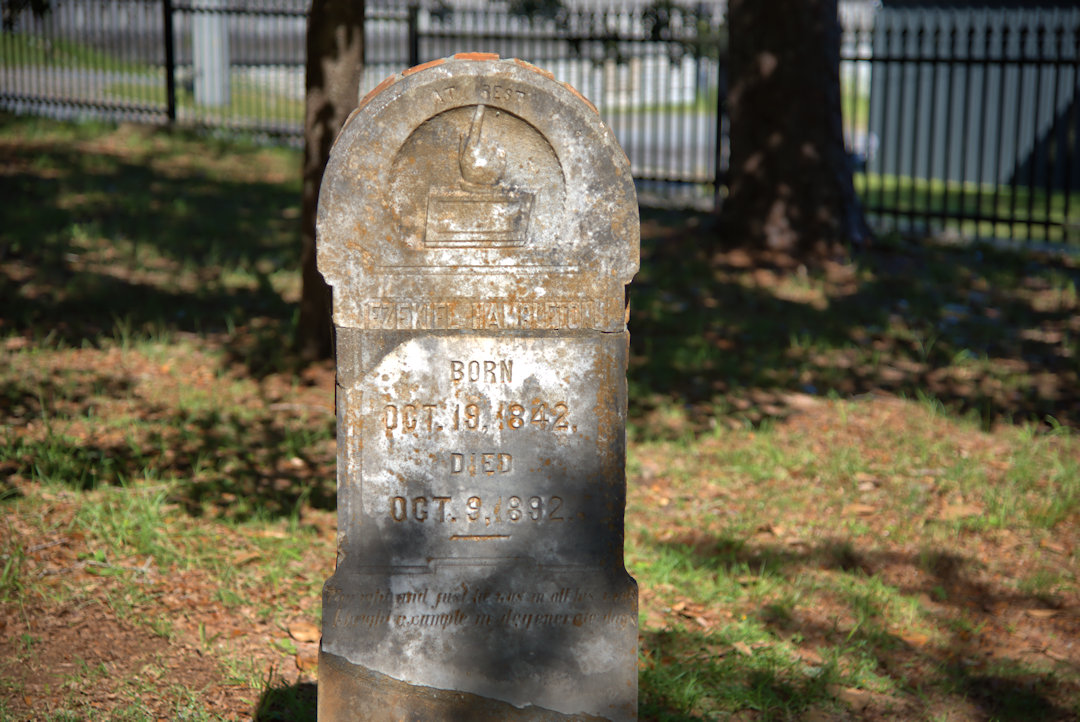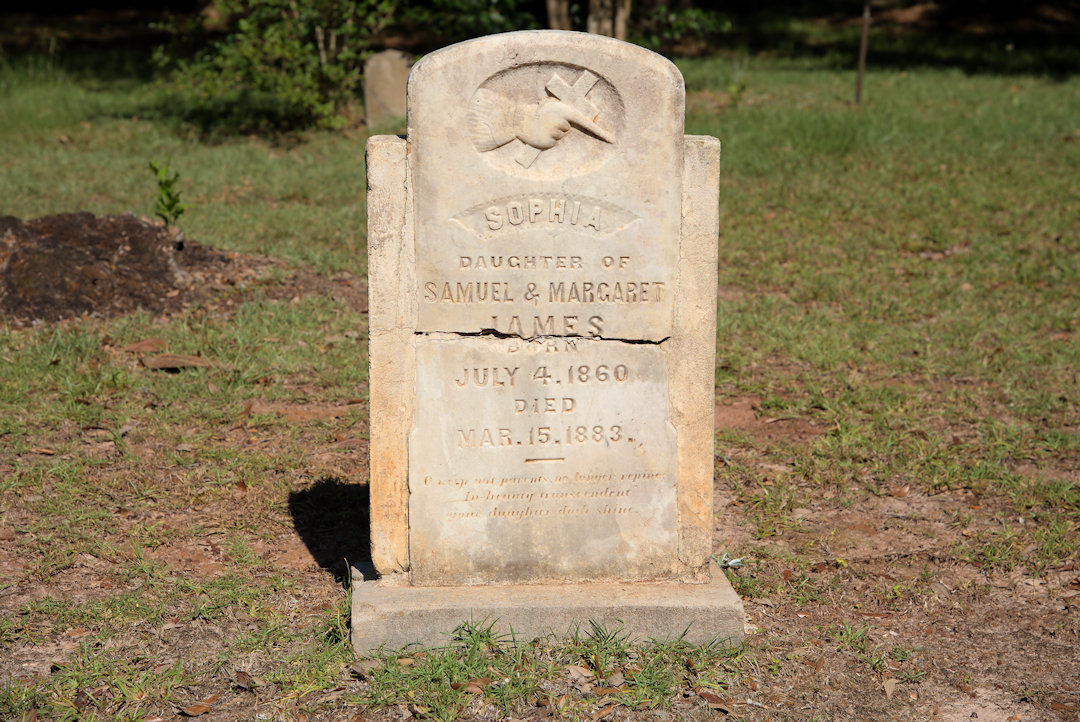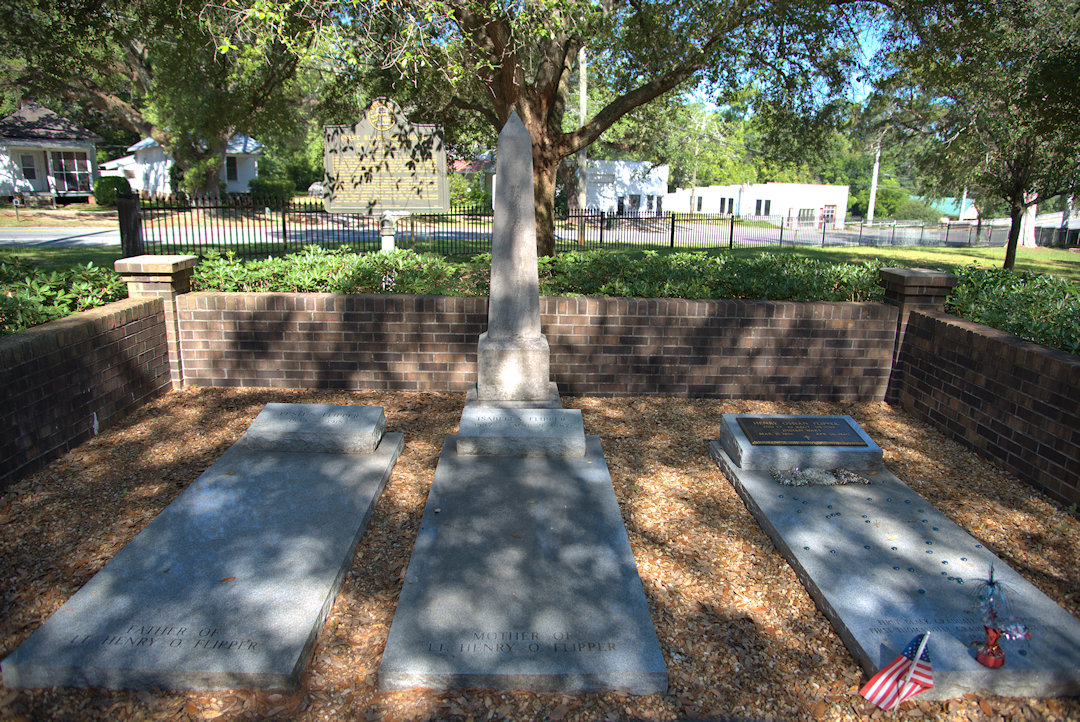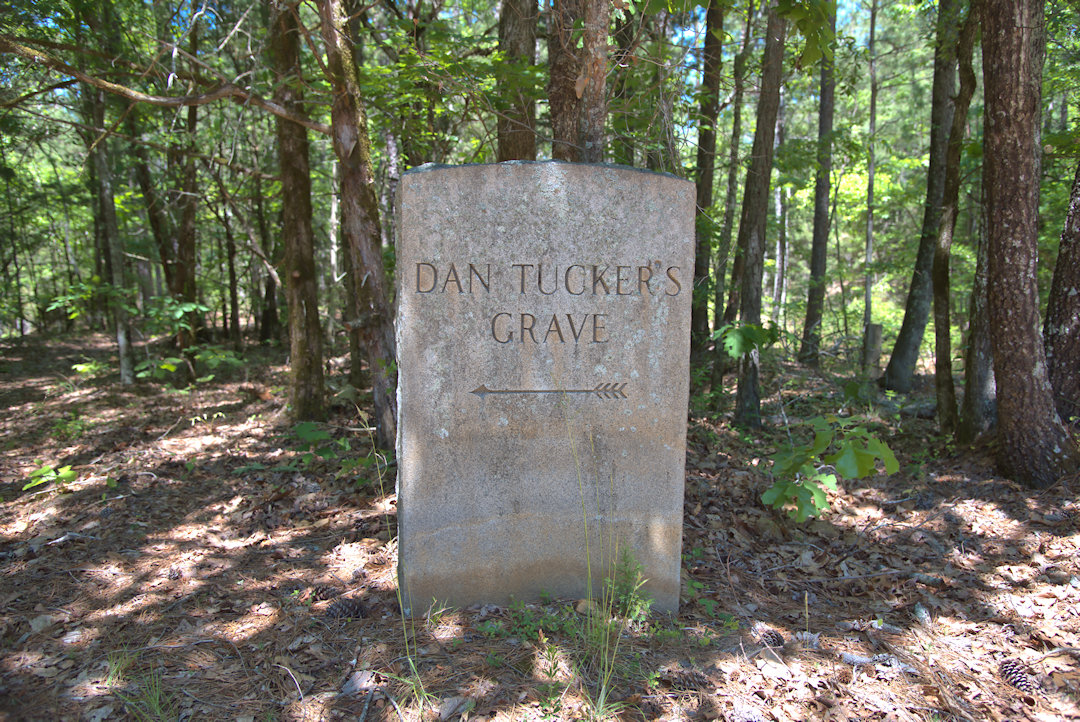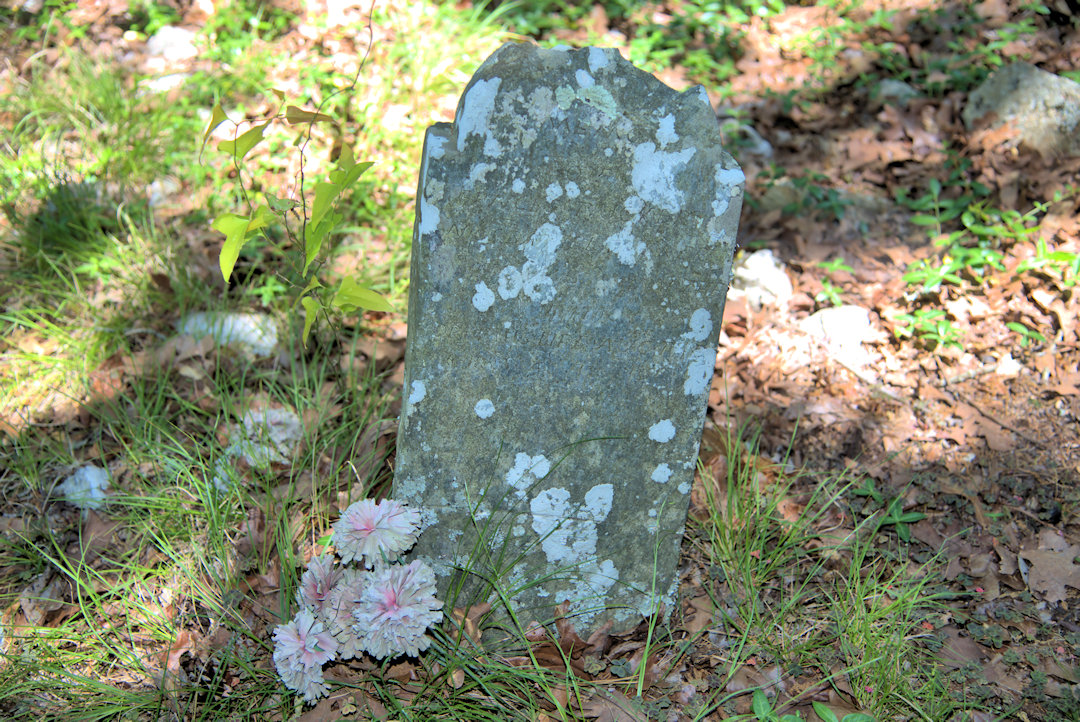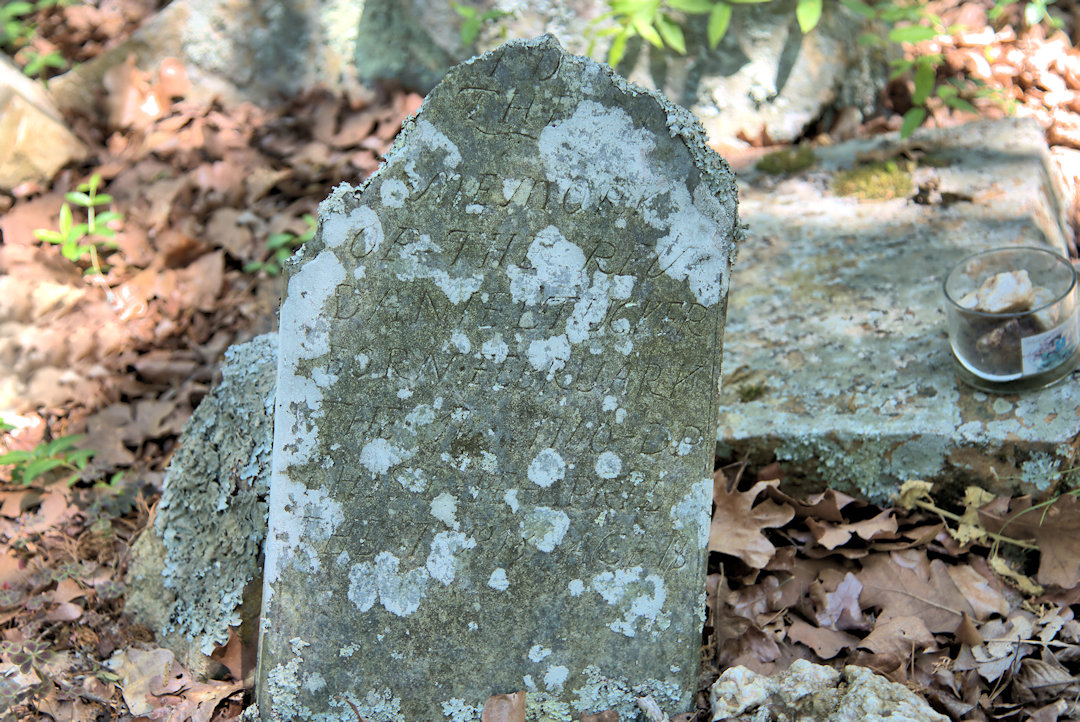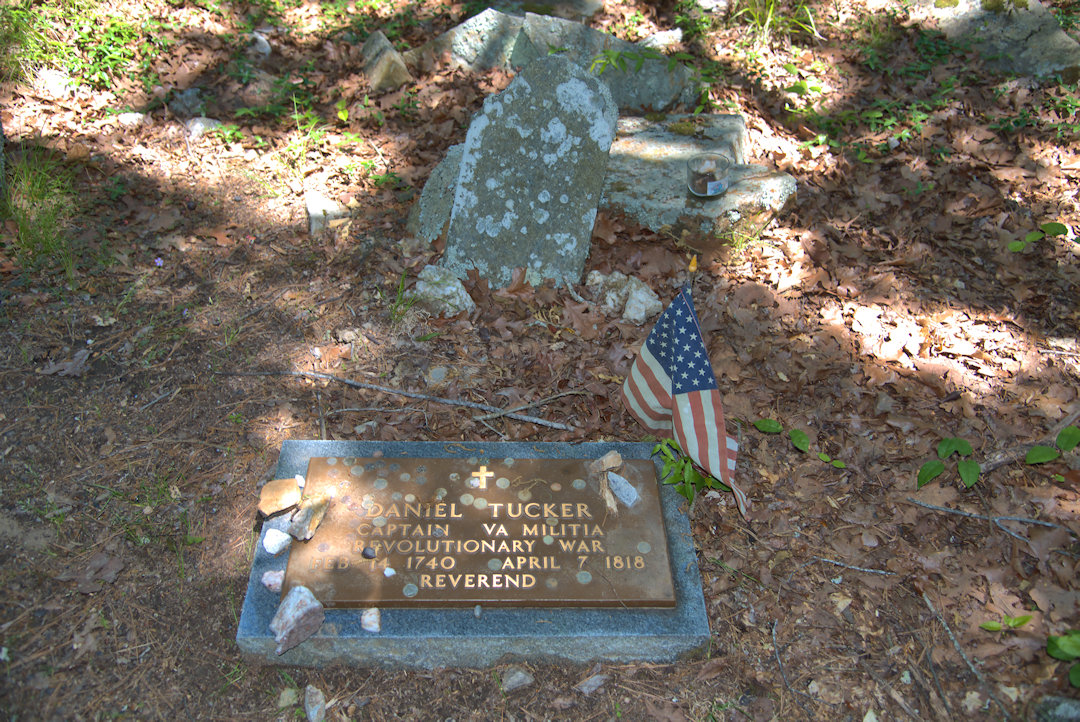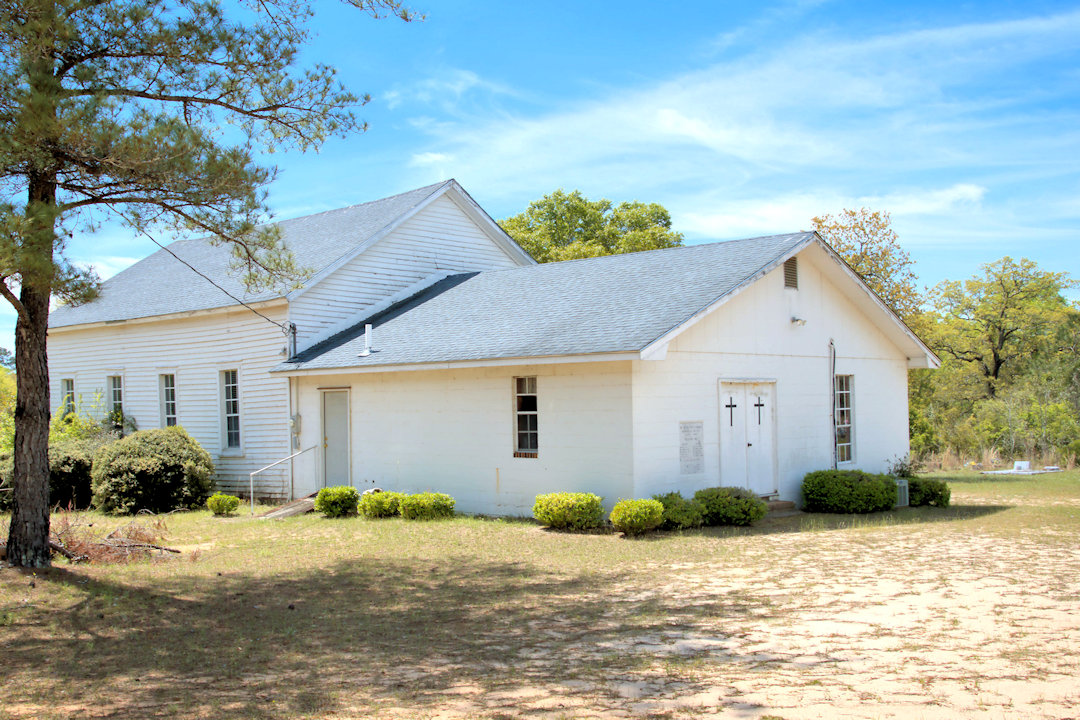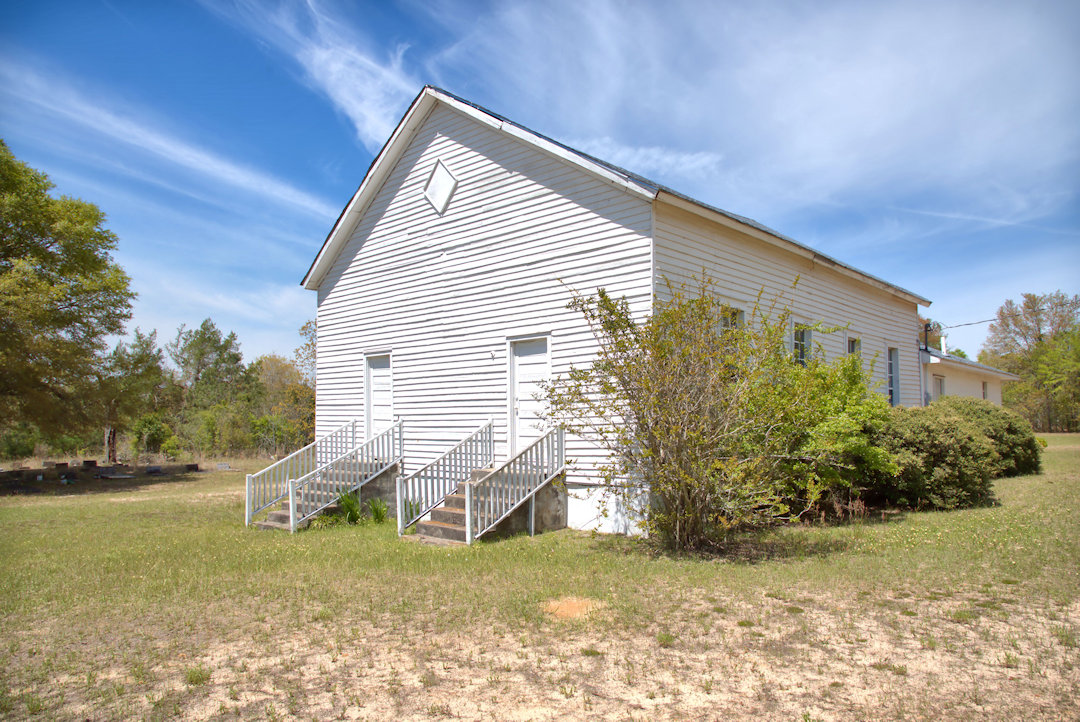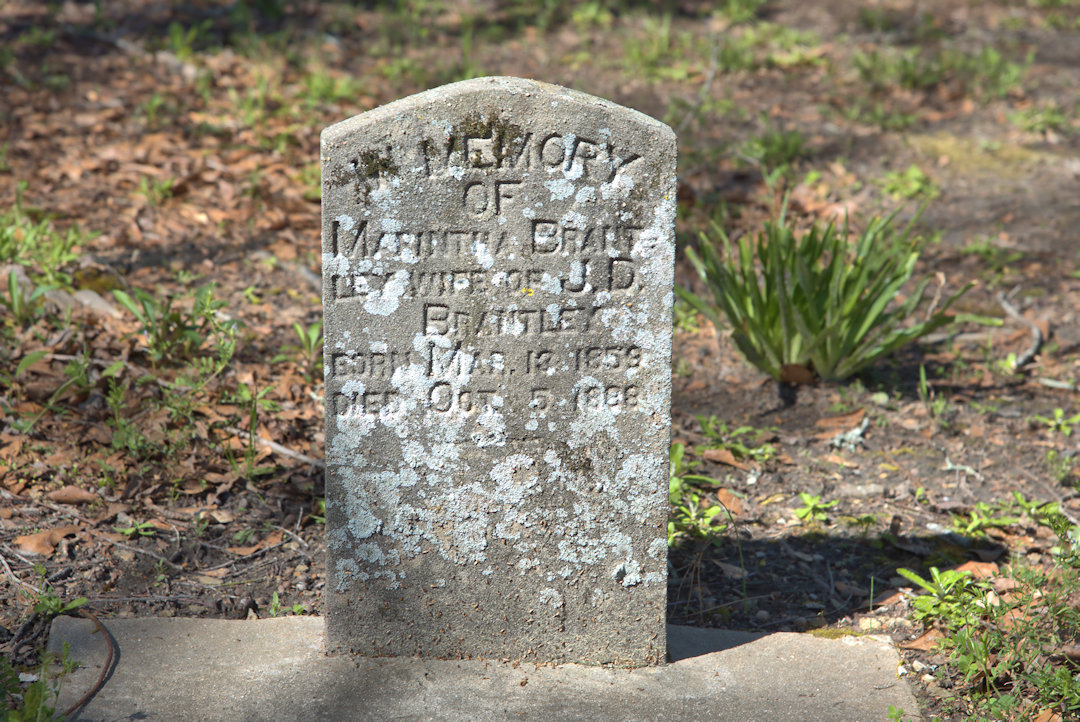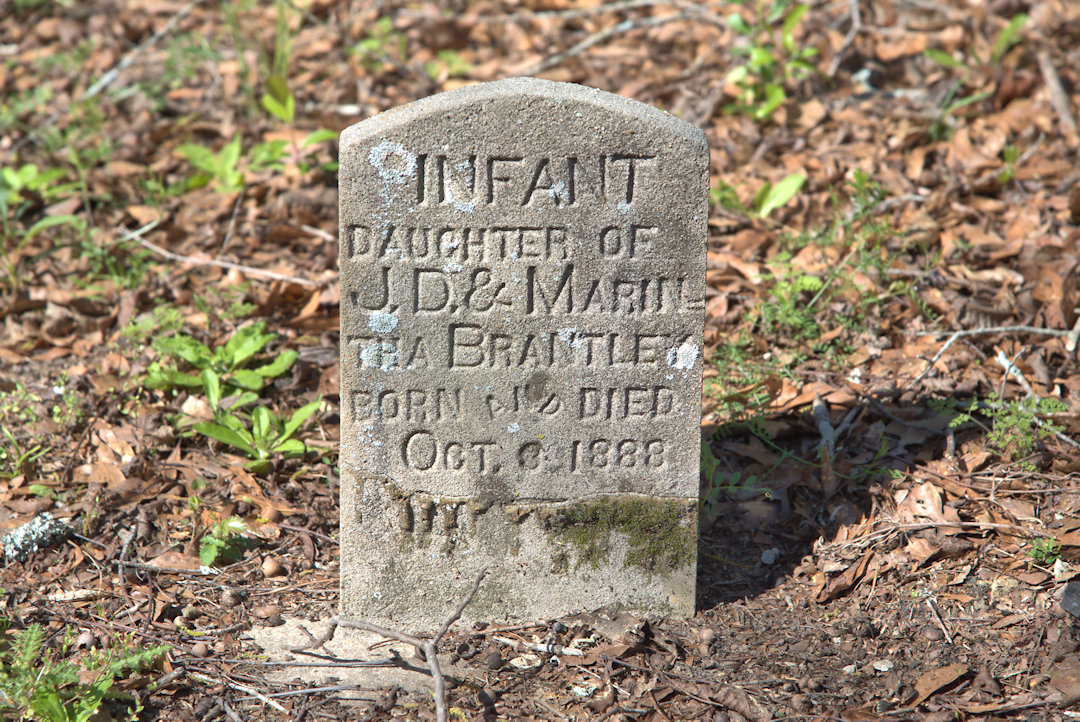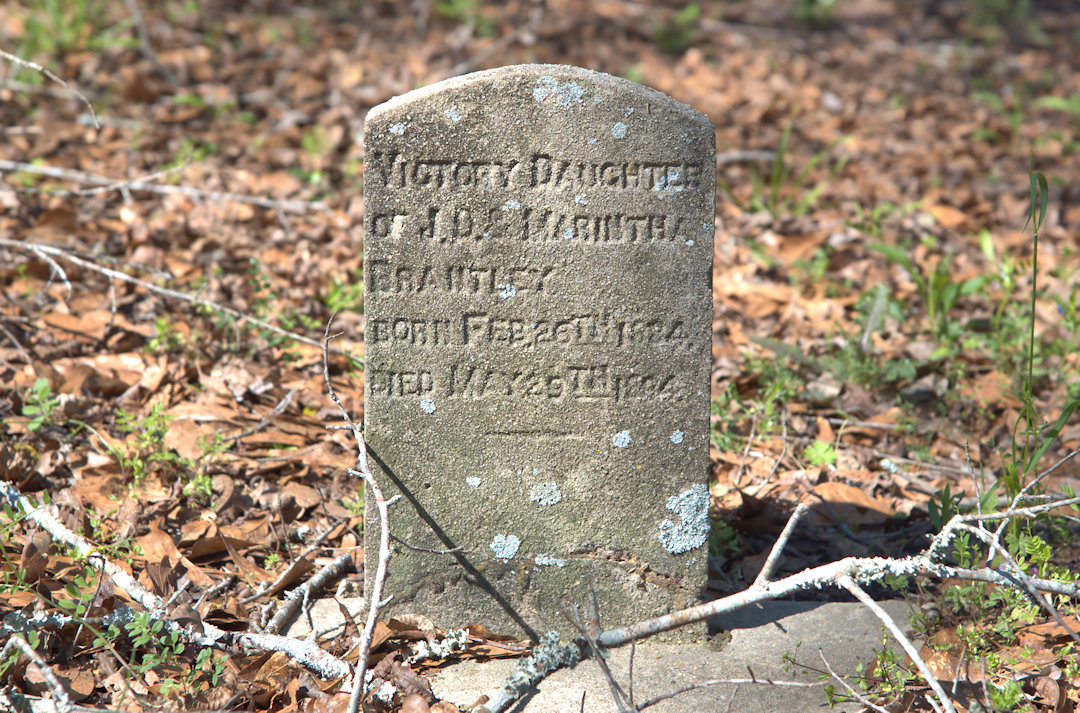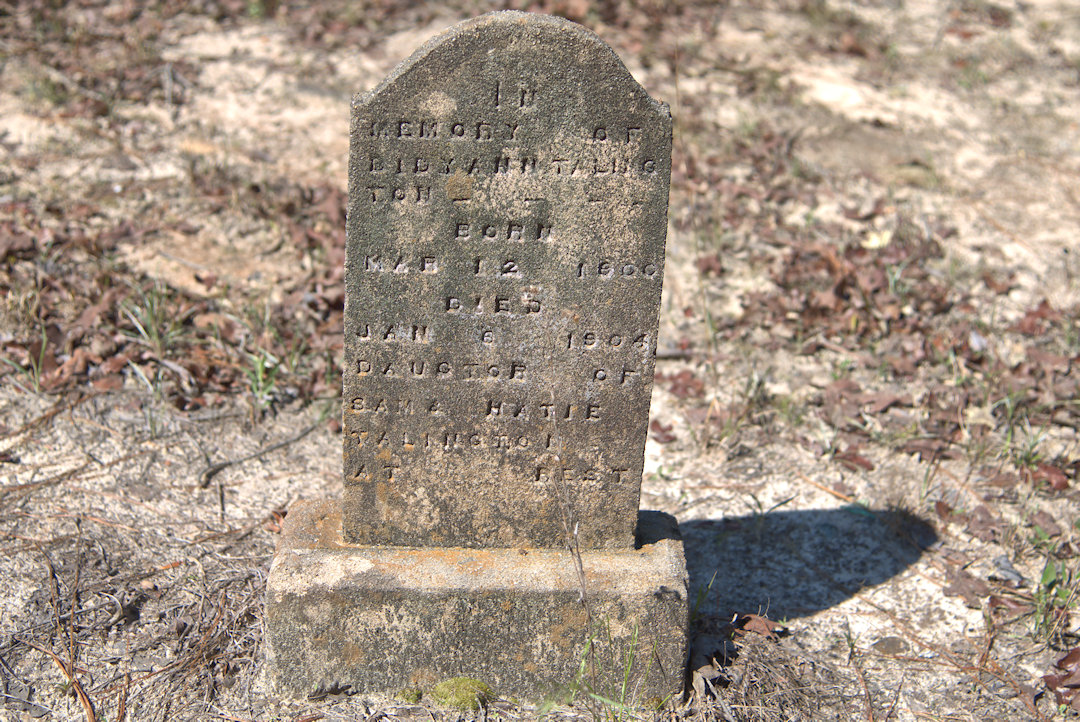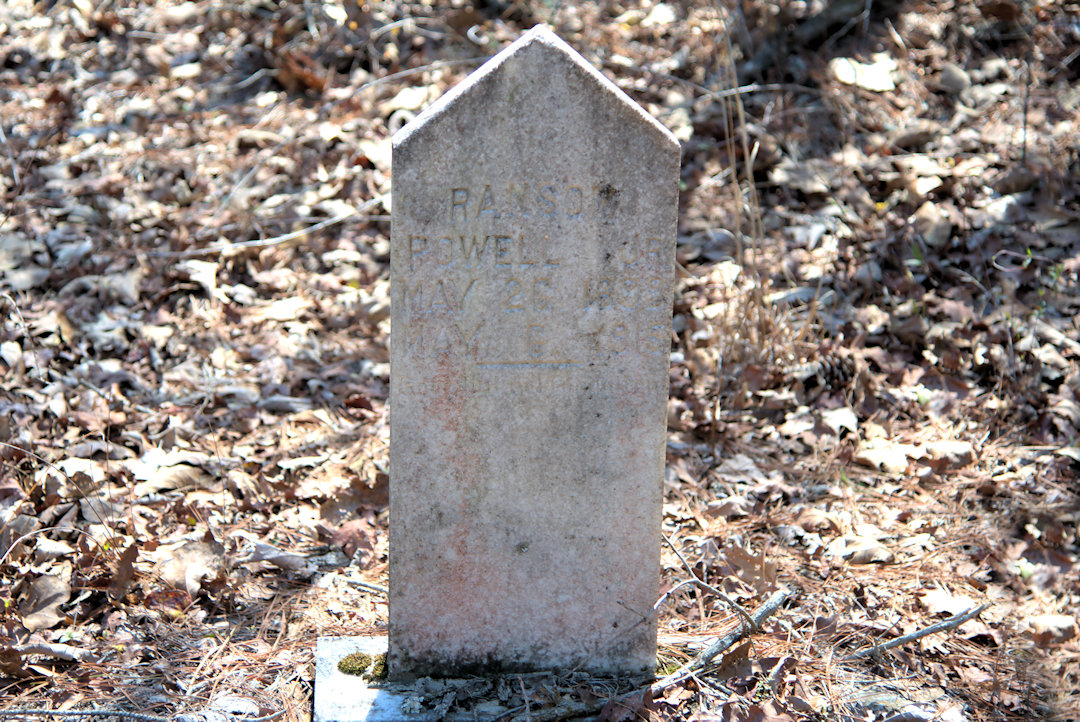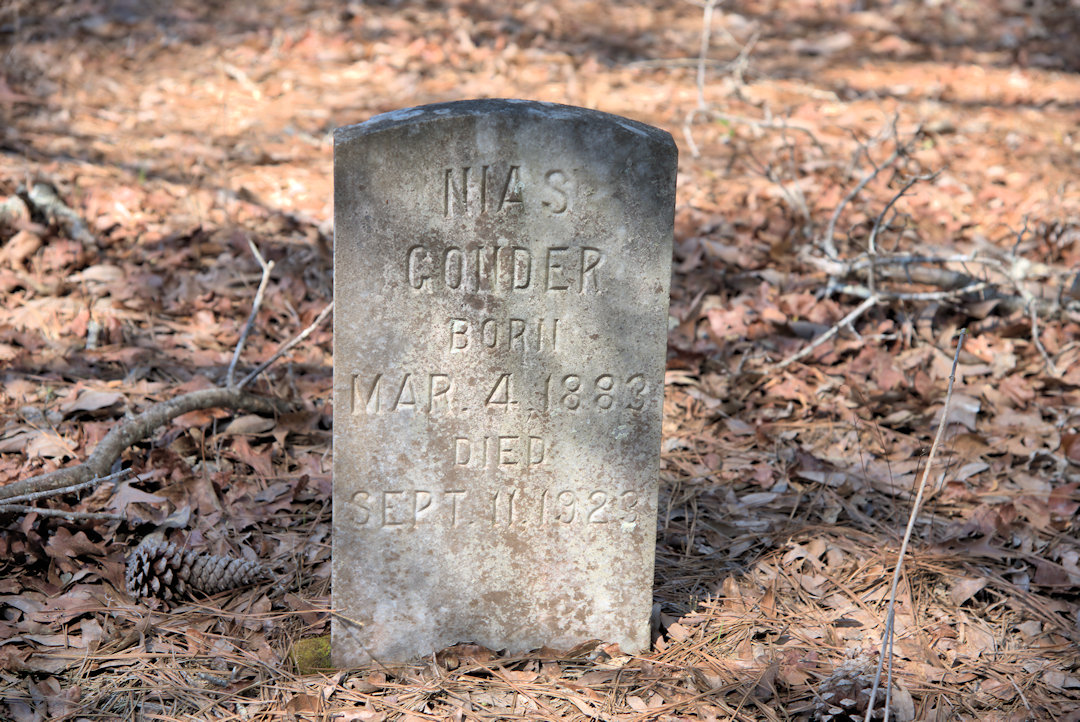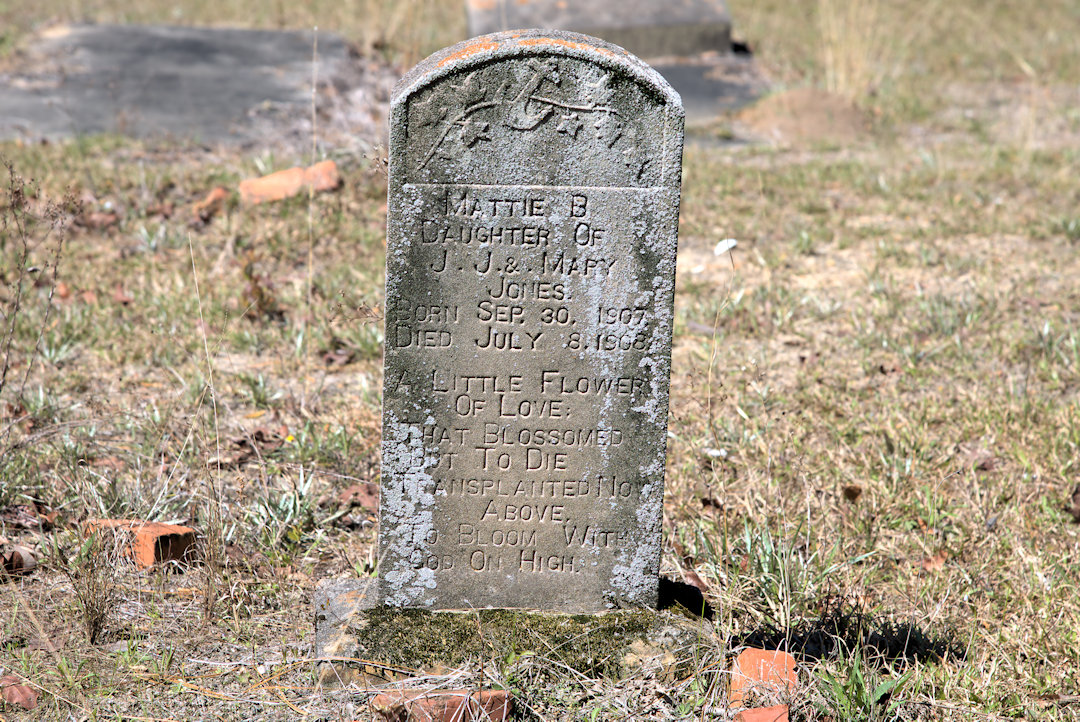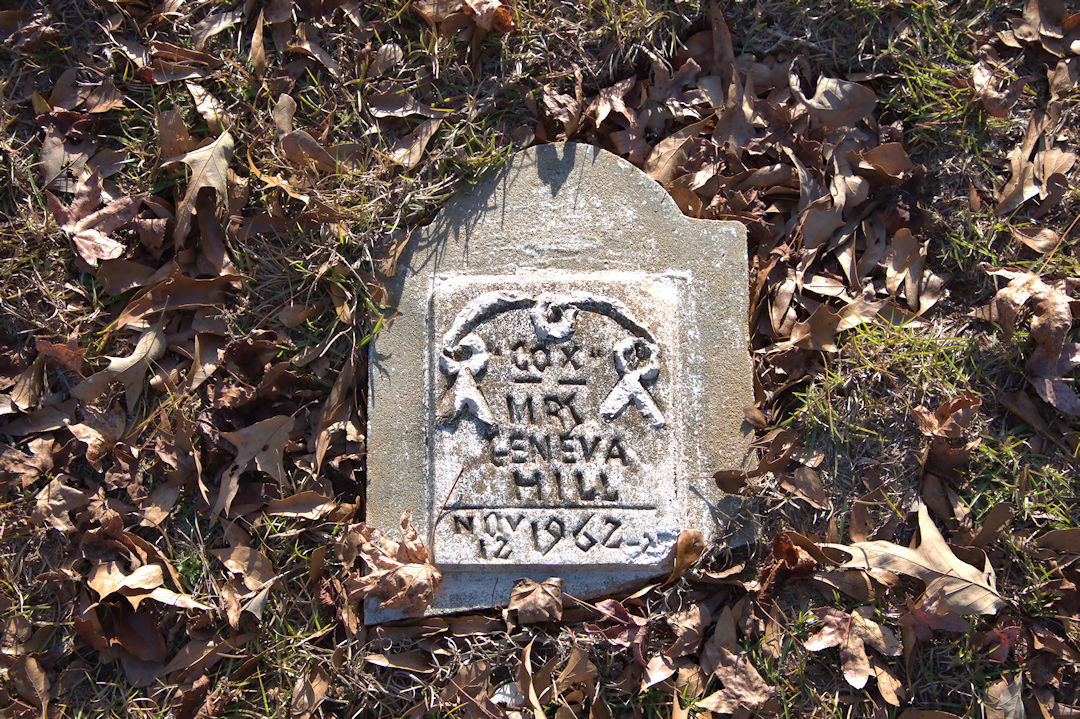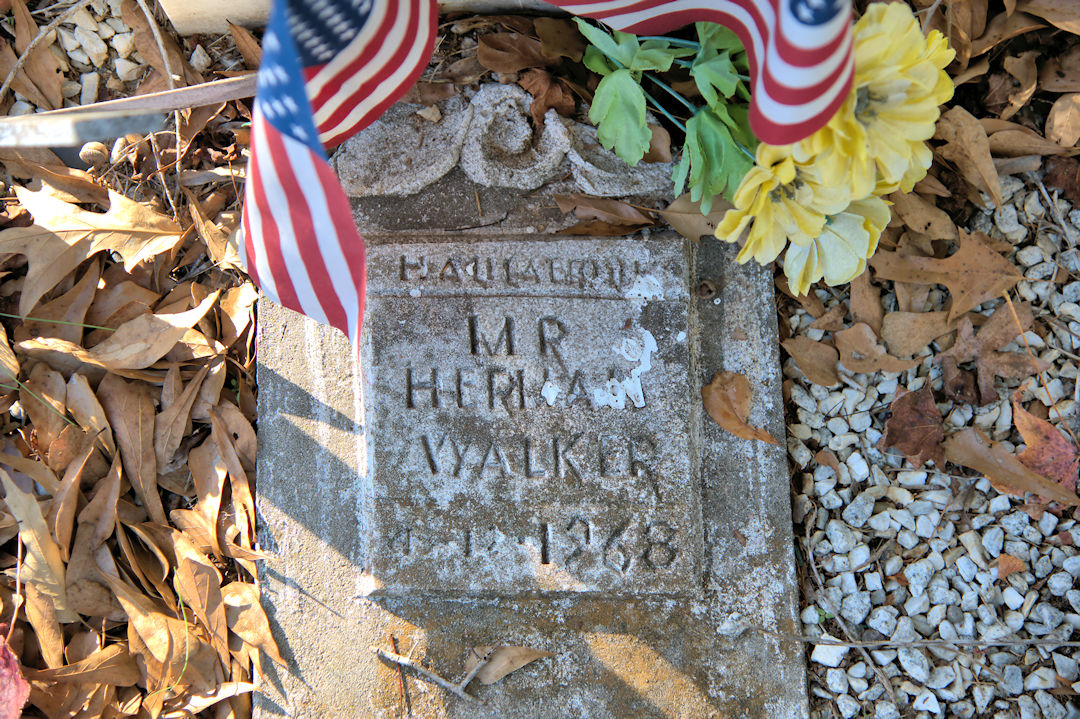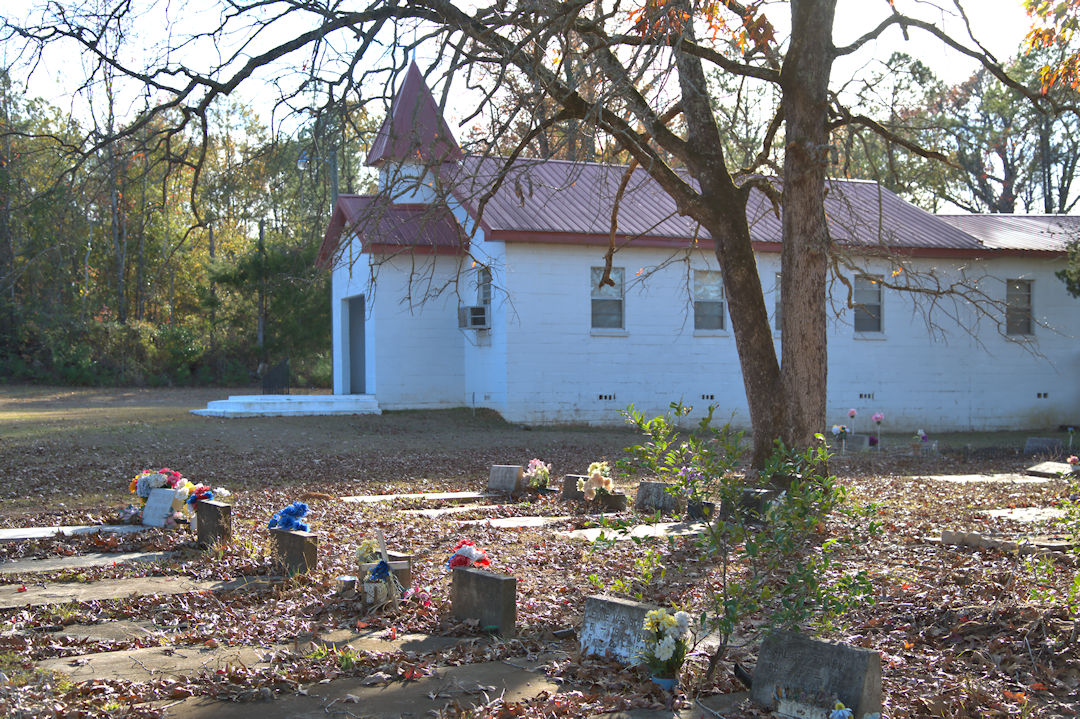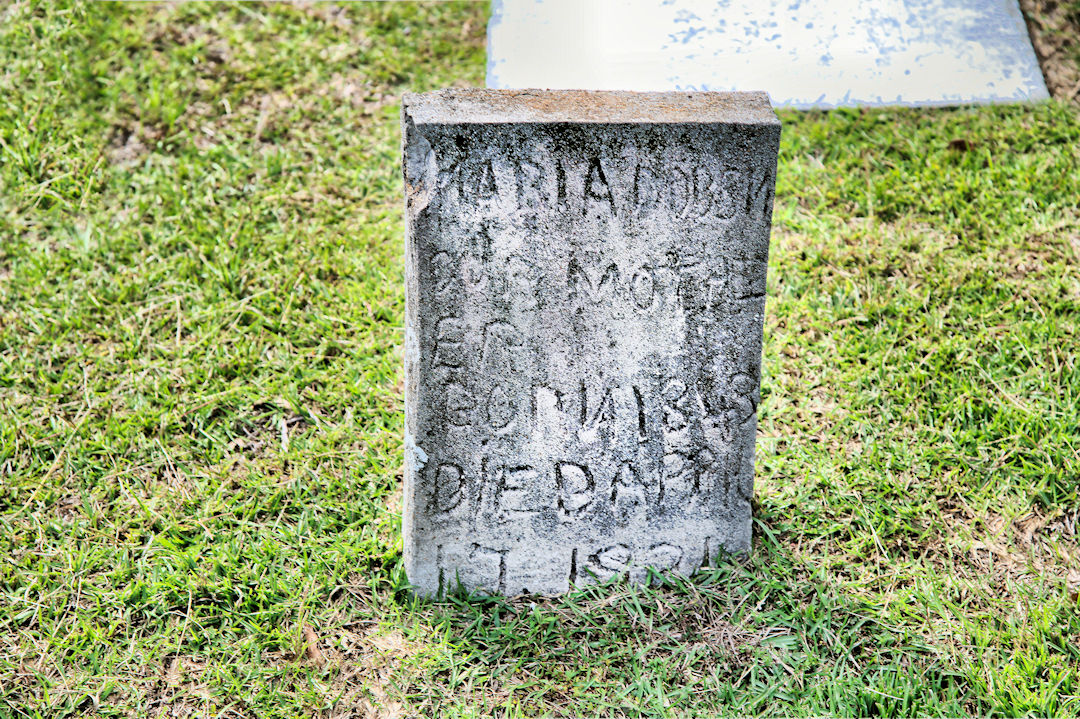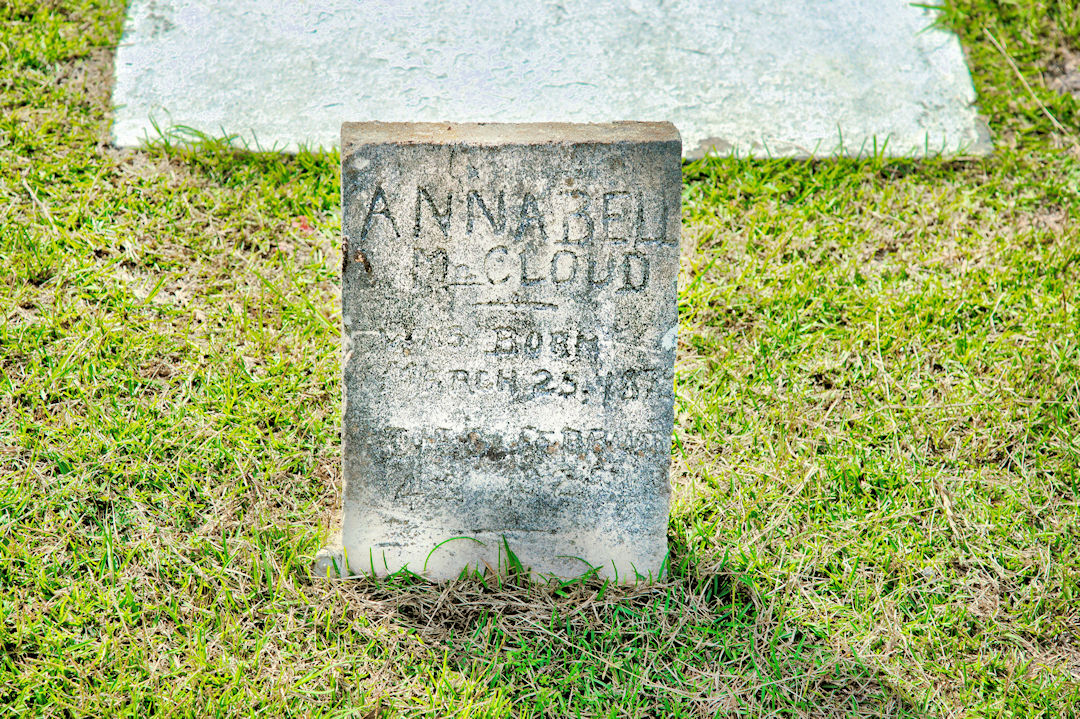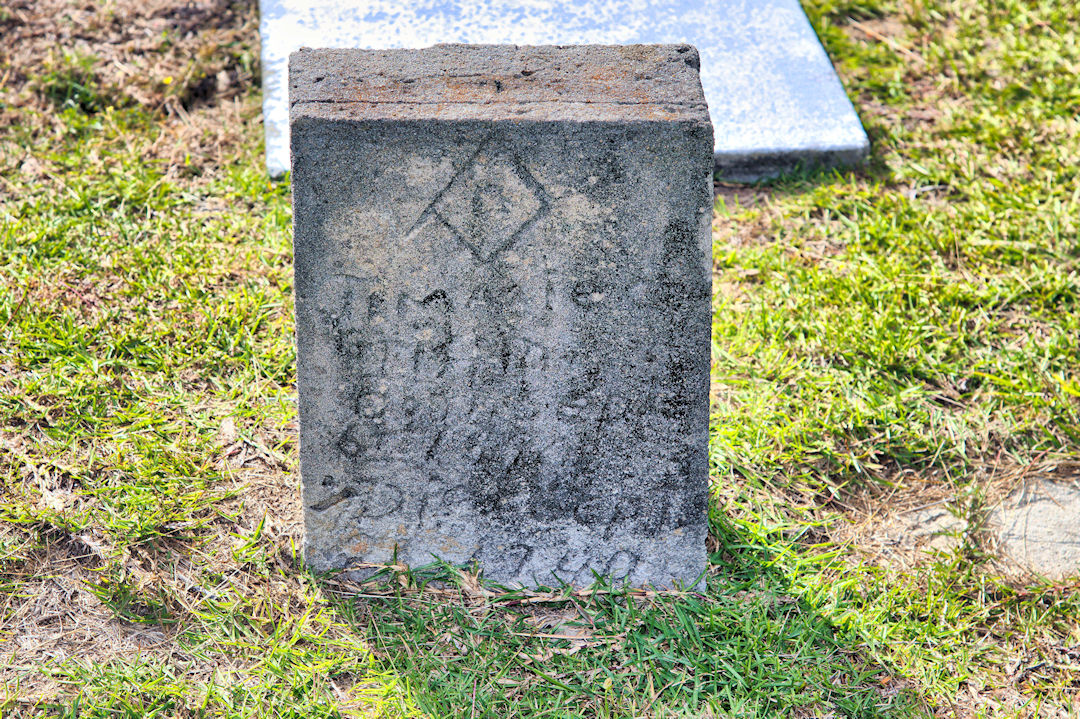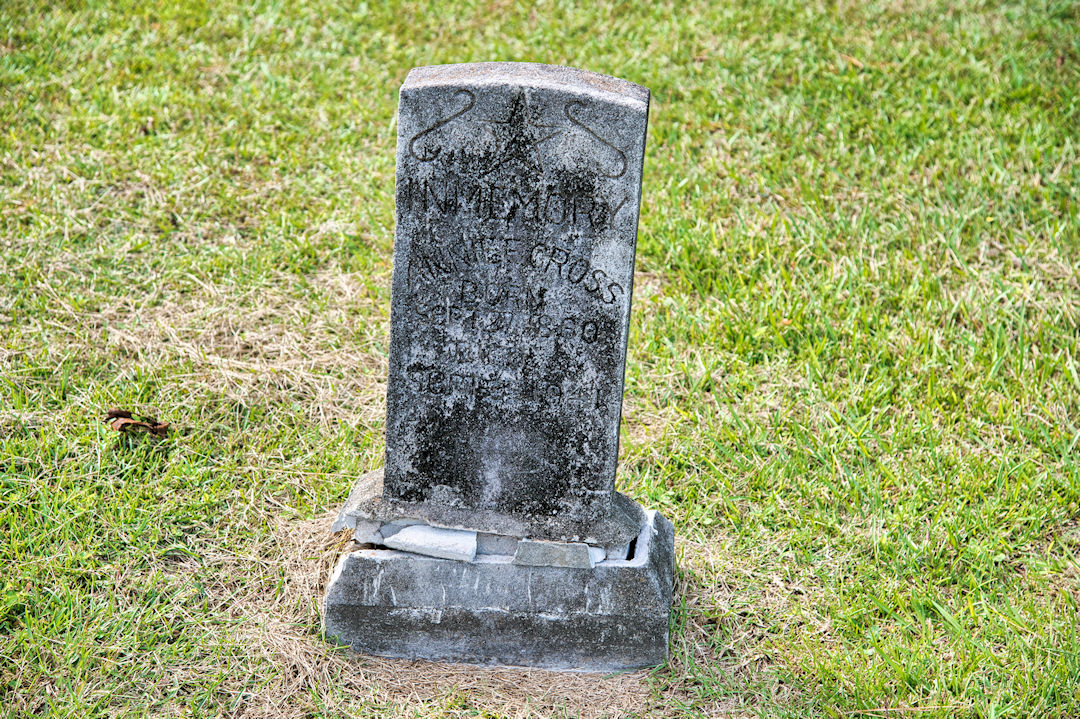
Thomasville’s Old Cemetery dates to at least 1842, based on burial dates, and is a microcosm of 19th century funerary art, ranging from exceptional vernacular memorials to grand marble obelisks and monuments. It is said to be the oldest cemetery in Thomas County, incorrectly, but it may be the oldest in Thomasville proper. The deed conveying the cemetery to the city of Thomasville is dated 1858. Nearly 40 Confederate veterans, some in unmarked graves, are buried here, as well.
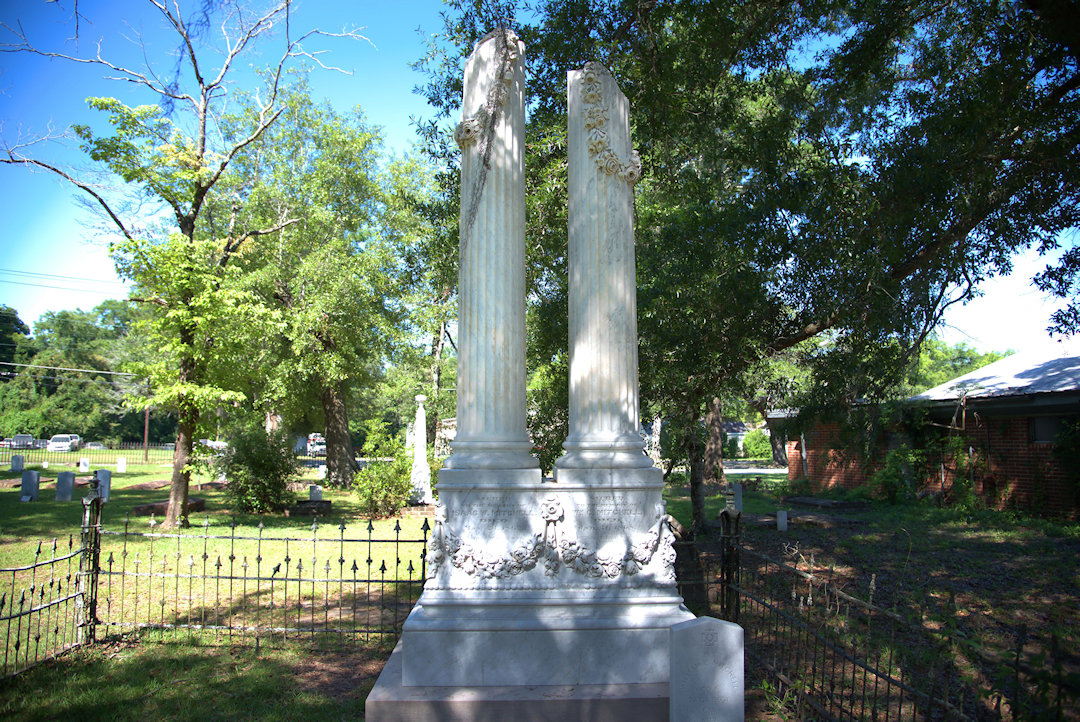
Isaac Mitchell was a prominent planter and large slaveholder in the area. In 1838, he sold a thousand-acre plantation with two miles of shoreline on Lake Iamonia, near Tallahassee. He died during the Civil War, and his son, who served in Co. F, 29th Georgia Regiment, died a few years later. Their monument, featuring ruined columns topped with wreaths, is one of the finest in the cemetery.
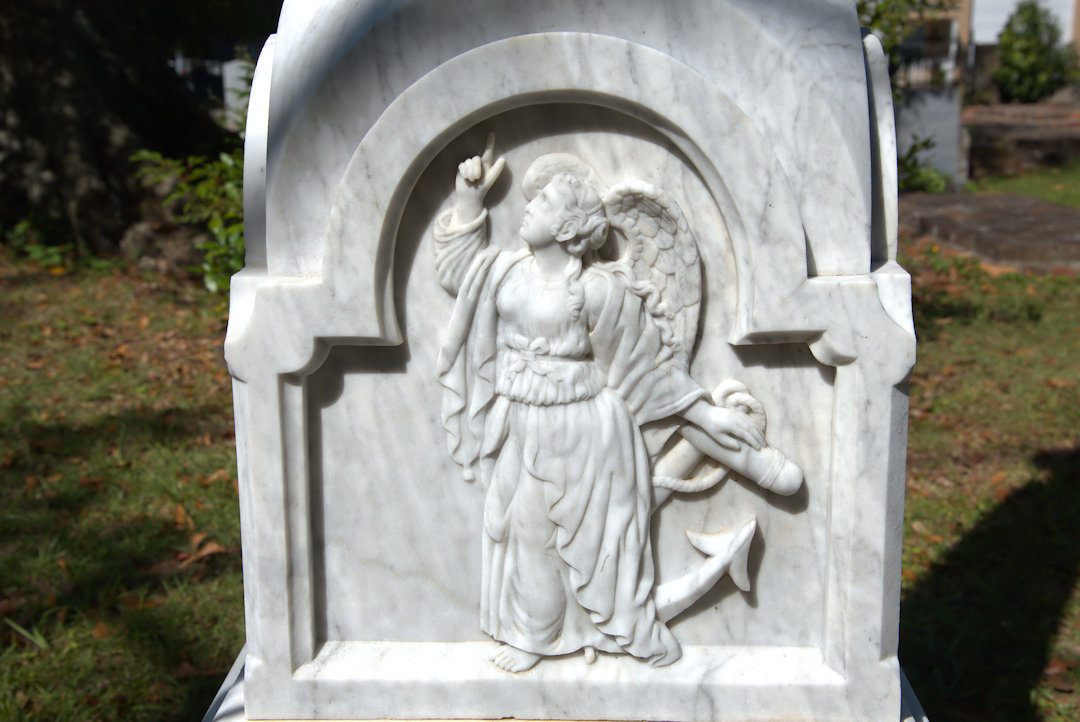
This beautiful Victorian monument is a bit of a mystery. I couldn’t find a name on it, but there’s an adjacent government-issued marker for Sgt. James A. McLendon, who served in Co. F., 50th Georgia Infantry.
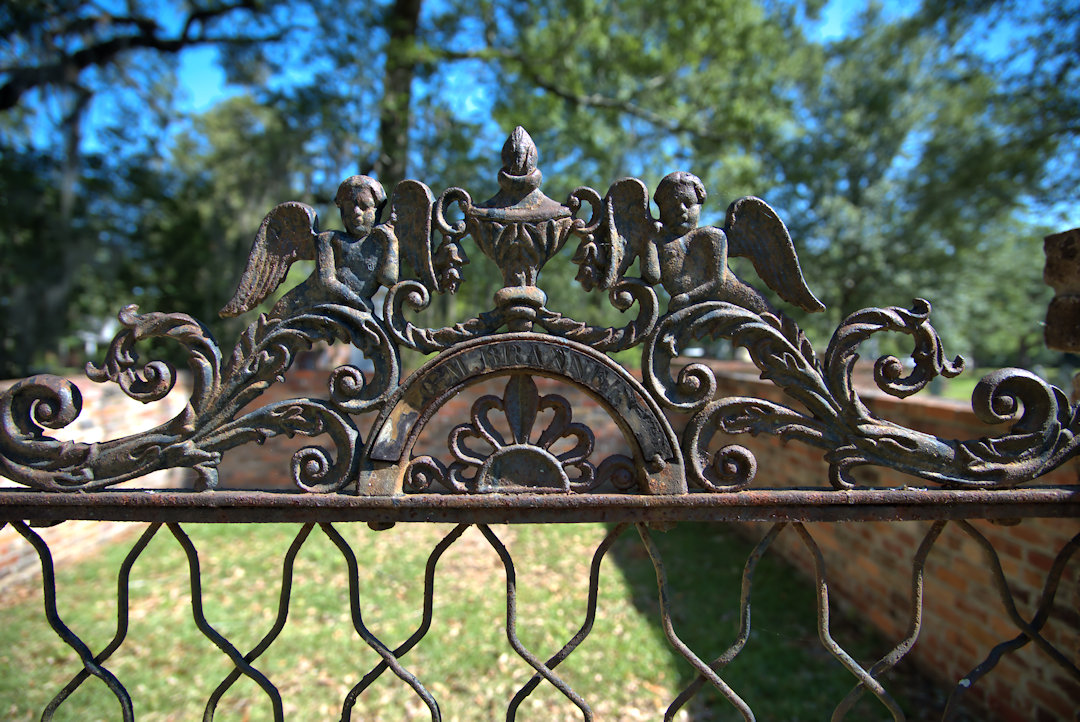
The gate decoration here was a common design. There’s a very similar example at the Isaac Joseph House in Columbus. The name on that gate appears to be the name of the maker, so I wonder if this is not the maker’s name, as well. I’ve only been able to discern that it’s either Branner or Brannem, neither of which I find in the burial list for the Old Cemetery. Another mystery, at least for now.

This is one of two or three seashell graves in the Old Cemetery, this one being in the best state of preservation. In fact, it’s one of the nicest I’ve seen. There is a government-issued memorial at the foot of the grave that notes Captain Henderson served with Co. F, 29th Georgia Infantry.
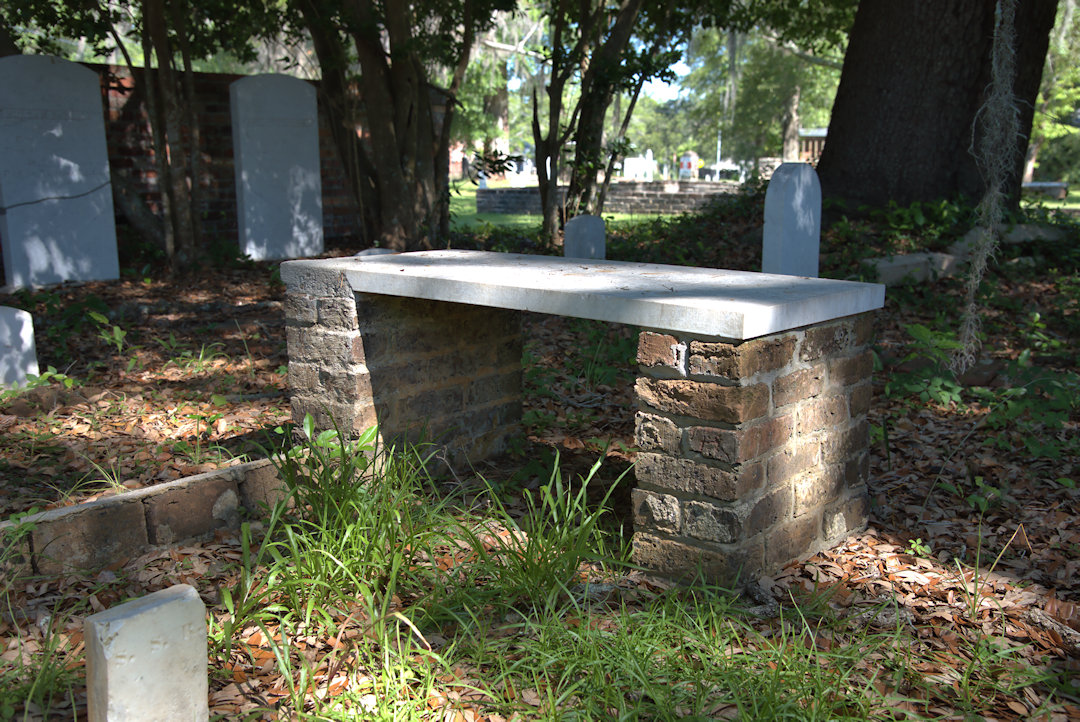
This table grave is an interesting mix of vernacular and formal funerary art. The handmade bricks, likely made by enslaved laborers, are topped by a professionally made marble slab. The girls were both very young, and since they died around the same time, were likely afflicted with the same illness.
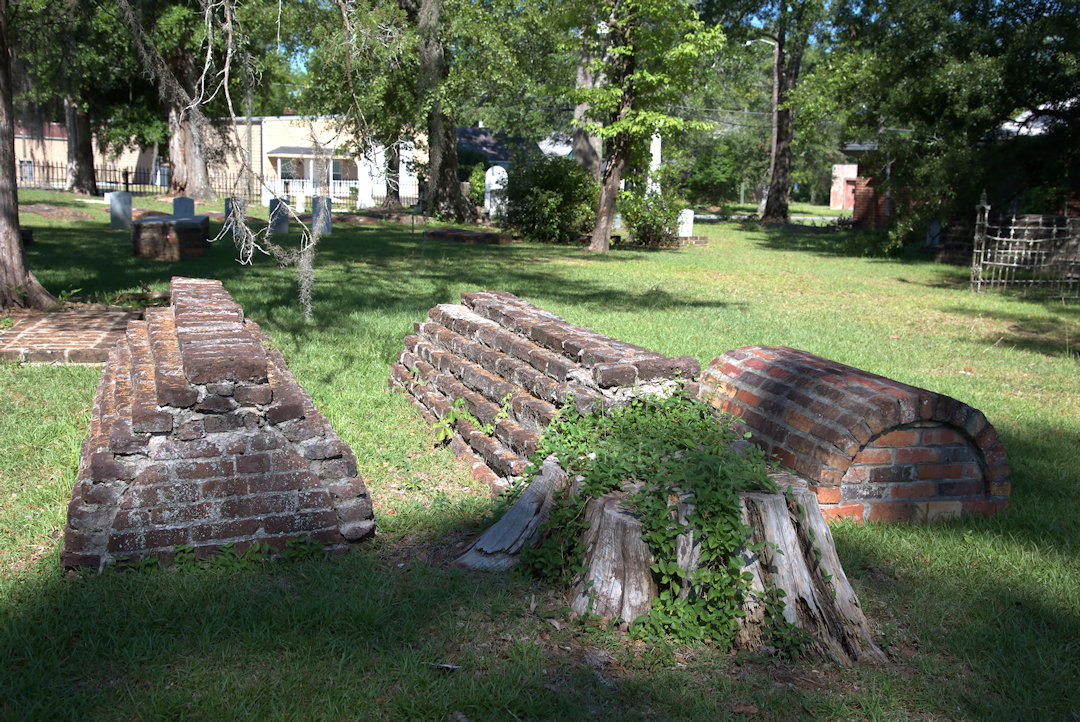
There are numerous brick crypts and slabs in the Old Cemetery.

Most of these are unidentified, and therefore I’m just showing them for the skill and craft involved in their production.

Some of the brick in the memorials appears to be handmade, and I would guess that some were made by enslaved people.

The gravestone below is made of slate, an uncommon material in Georgia. I’ve rarely found such memorials away from the coast.

The Seixas family were Thomas County pioneers. The Seixas House, circa 1835, is thought to be the oldest one-story house in Thomasville.
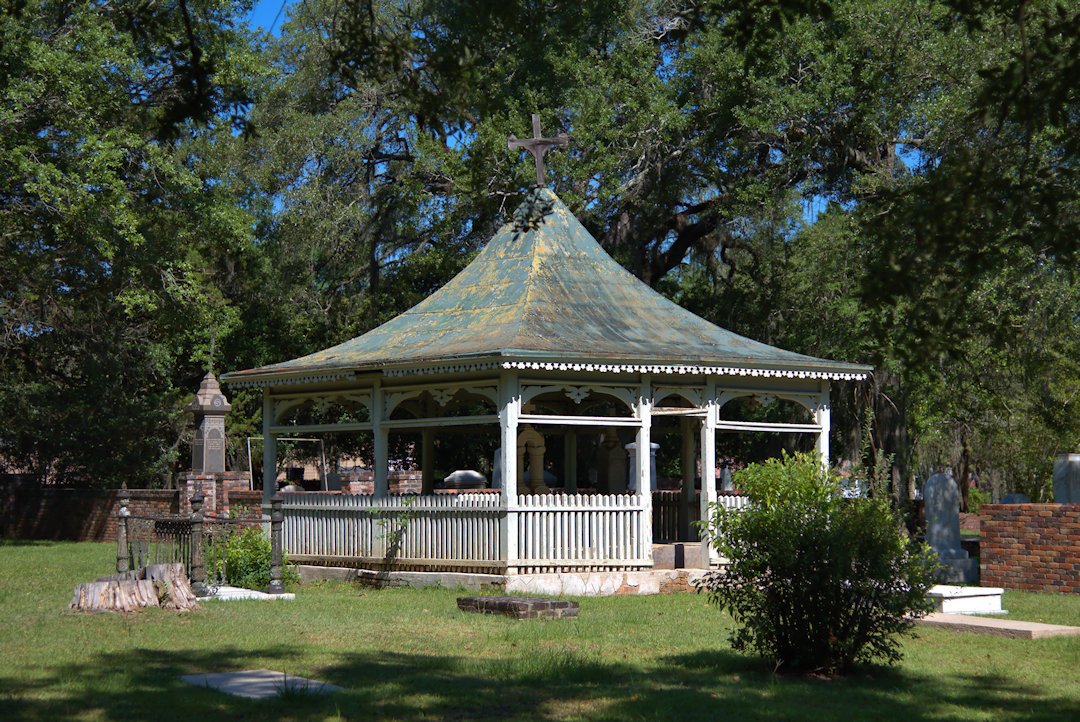
The gazebo is a prominent landmark in the Old Cemetery.


